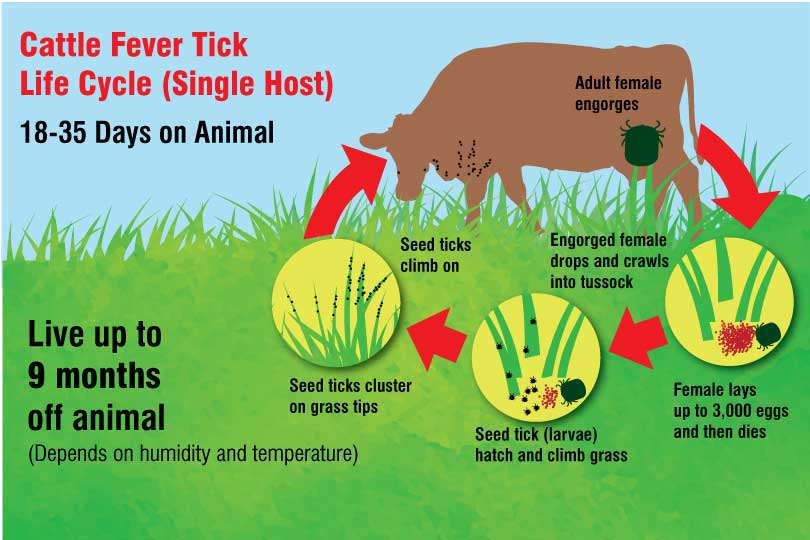By Julie Tomascik
Editor
Spray boxes are back in action after being temporarily sidelined last month in the ongoing fight against cattle fever ticks.
The Texas Department of Agriculture (TDA) visited a South Texas ranch in August and halted the use of cattle spray boxes across the fever tick eradication area after receiving complaints that cattle had died from overexposure to the pesticide, coumophos, used to kill the invasive ticks.
The department took action when Texas Animal Health Commission (TAHC) personnel operating the spray box were not able to contact U.S. Department of Agriculture (USDA) Animal and Plant Health Inspection Service officials charged with oversight and application of the product approved for use by the Environmental Protection Agency (EPA).
This decision was met with pushback from state cattle organizations and Texas Farm Bureau (TFB), alongside state and federal agencies charged with eradication efforts.
The spray boxes have proven to be an effective tool for regulators and preferred option for ranchers, according to TAHC.
“The eradication program is challenging, and it takes many months for a premises to reach tick free status and out of quarantine,” Tracy Tomascik, TFB associate director of Commodity and Regulatory Activities, said. “The spray boxes offer an improved option that’s easier on cattle, more efficient and more preferred than dipping vats.”
Cattle fever ticks have the potential to carry and transmit the disease bovine babesiosis, which destroys red blood cells and results in anemia, fever, illness and death in up to 90 percent of infected cattle.
Outbreaks across the southern part of Texas have driven stakeholders to take notice and act to suppress the ticks’ spread, Tomascik said.
Texas currently has more than 2,500 premises across the state under quarantine, and history shows fever ticks can range from southern Missouri to parts of Virginia, as well as other states across the southeastern U.S.
The eradication program has shown success with multiple counties being released from temporary quarantine. Tomascik noted those advances relied heavily on trained state and federal professionals, the cooperative work with landowners and ranchers and use of effective tools approved by federal regulatory agencies.
The specially-formulated product used in the spray boxes is only available for use by trained regulatory employees and must be applied to the entire animal to ensure a fever tick doesn’t evade contact with the insecticide.
The spray box uses high pressure nozzles inside an enclosed cattle chute with a feature that captures and recirculates all excess product and prevents environmental contamination.
The boxes are mobile units, allowing officials to take the treatment to the ranch and have been in use for decades. In the last four years, state and federal regulators have used the spray boxes to safely and effectively treat more than 60,000 head of cattle.
Texas Commissioner of Agriculture Sid Miller put a hold on the use of spray boxes in August, citing that, in his opinion, the boxes were not being used according to the insecticide label.
For more than a week, cattlemen and women were not able to use the spray boxes.
On Aug. 7, Miller met with cattle industry representatives and began developing a plan to move forward. Spray boxes are once again part of the eradication and control efforts, but for a limited time.
“This short-term solution allows Texas cattlemen and women to care for their livestock and prevent the spread of fever ticks until a permanent solution can be implemented,” Tomascik said.
Label clarification, according to Miller, is needed regarding ventilation restrictions. USDA, EPA and product manufacturer Bayer have set course to resolve this issue.
TAHC, charged with cattle fever tick eradication outside the permanent quarantine zone along the Mexican border, has instituted additional data capture after application by the spray box to ensure cattle health and well-being are not jeopardized.
“Farmers and ranchers take pride in their work and caring for their livestock,” Tomascik said. “It’s reassuring that regulatory agencies are going above and beyond protocols that have worked well for decades to help clear any question about the safety of spray boxes.”

